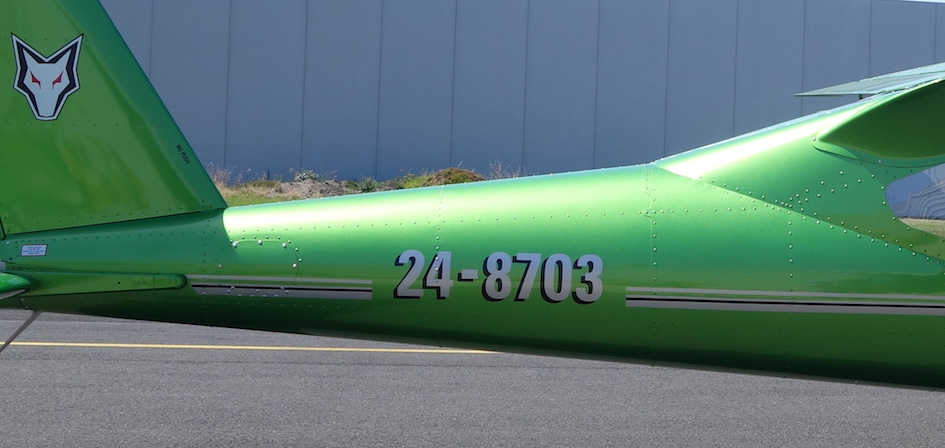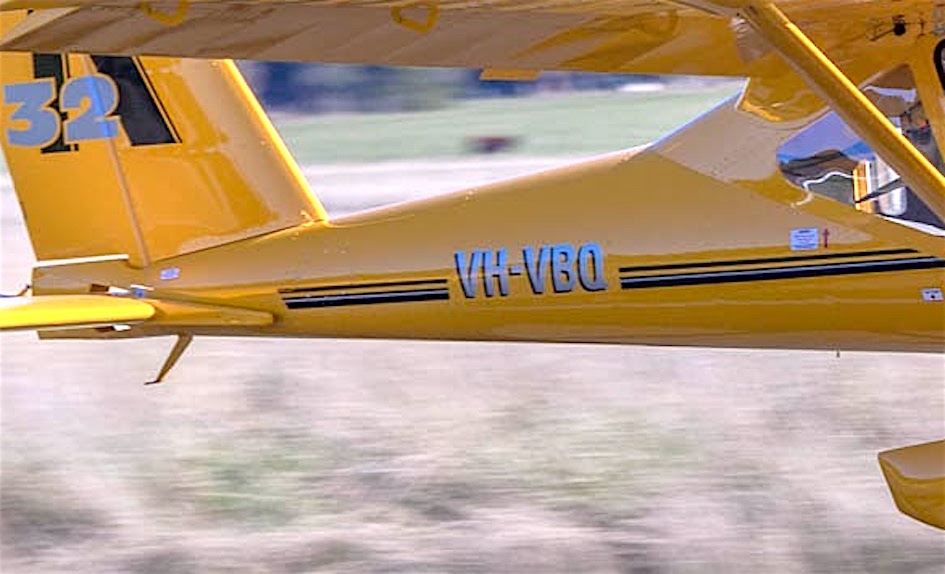
 One of the commonest questions I’m asked by new Light Sport Aircraft (LSA) buyers is: “Should I register the aircraft general aviation VH- with CASA or recreational with Recreational Aviation Australia (RA-Aus)?”. This question is, if anything, being asked even more frequently now CASA is offering the Recreational Pilot’s Licence (RPL), which allows RA-Aus Pilot Certificate owners to gain a license upgrade allowing them to fly certain larger VH- registered aircraft, even into certain categories of controlled airspace.
One of the commonest questions I’m asked by new Light Sport Aircraft (LSA) buyers is: “Should I register the aircraft general aviation VH- with CASA or recreational with Recreational Aviation Australia (RA-Aus)?”. This question is, if anything, being asked even more frequently now CASA is offering the Recreational Pilot’s Licence (RPL), which allows RA-Aus Pilot Certificate owners to gain a license upgrade allowing them to fly certain larger VH- registered aircraft, even into certain categories of controlled airspace.
The answer(s) are not simple and depend on many variables – but get one thing straight up front: overall costs, based on a 3-year ownership of a new LSA, are pretty much the same whichever route you choose. Yes, you need a licensed engineer to sign your maintenance release on a VH- registered aircraft, and a CASA medical every so often, but these costs are completely offset by the annual aircraft re-registration and Pilot Certificate renewal charges made by RA-Aus.
“Ah yes”, I hear you muttering, “but under RA-Aus I can do all my own maintenance. Under CASA you have to pay an engineer.”
Putting aside the arguments for and against actually doing your own maintenance, CASA/VH- aircraft pilots can in fact carry out a lot of basic maintenance on their aircraft under something called ‘Schedule 8‘. For those of you unfamiliar with CAAP 42ZC-1 of CAR 1988 regulations, a summary follows.
But before you take maintenance matters into your own hands, read the relevant sections of CAR 1988 thoroughly to make sure (a) your aircraft is included in the definitions and (b) you are actually capable of doing the work. When it comes to aircraft maintenance – competency is king, whether you’re GA or RA-Aus.
Under Schedule 8, the main maintenance activities a pilot can carry out are:
– changing the engine oil and filter
– changing the air filter
– changing, replacing and/or gapping the spark plugs
– replacing the aircraft battery(s)
– topping up the hydraulic brake fluid
– changing and repairing the tyres & tubes, providing this does not require jacking the aircraft completely off the ground
– changing or replacing the seats, provided no disassembly of primary airframe parts or controls is required
– replacing seat belts/harnesses
– with some conditions, removing and replacing a door (eg for photo sessions)
– removing and replacing non-structural inspection plates and covers
– repairing/replacing safety-wire or pins, so long as they are not on primary controls
– even installing & removing a glider tow hook!
There are other activities which are also permitted. However, the main no-no is that the pilot cannot disconnect or reconnect any parts of the primary controls of the aircraft – although they can carry out the so-called ‘dual inspection’ of the controls after maintenance by a qualified engineer.
In short, a GA PPL can do most of the day-to-day maintenance on their aircraft, the same as an RA-Aus Pilot Certificate holder. If there is more extensive work to be done – eg repairs after an accident, or diagnosing and fixing an engine problem, personally I’d rather hand that over to someone who is properly qualified – be it GA or RA-Aus!
So, if not for cost or maintenance reasons, what other arguments are there for and against GA/RA-Aus? Sorry, but here I have to answer a question with a question, but it’s an important one: ‘What sort of flying do you really want to be doing?’
1. If you want/need to fly regularly into controlled airspace, at the present time you have no choice – it has to be a PPL/RPL license in a VH-registered aircraft. The same if you want to fly at night, which is currently not allowed under RA-Aus regulations. But there’s one small wrinkle – if you have both a current PPL/RPL and RA-Aus Pilot Certificate, you can fly an RA-Aus registered aircraft into controlled airspace…but not at night.
2. If you already have either an RPL, PPL or higher, then I’d register VH- with CASA. That way you don’t have to do the mandatory 5-hour RA-Aus conversion, and you’ll already be familiar with CASA rules & regs.
3. If you have an RA-Aus Pilot Certificate or no license at all, I‘d register the aircraft with RA-Aus because (a) you already know the rules and regs under RA-Aus and/or (b) the flight training is shorter (read: ‘less expensive’) than PPL training. You can always upgrade to an RPL or PPL later if you want to fly a bigger aircraft or into controlled airspace, which are currently outside the limits of RA-Aus.
4. If you have both an RPL/PPL or higher and an RA-Aus Pilot Certificate, and you don’t need to fly into controlled airspace, it really doesn’t matter how you register your LSA. Either way it will cost much the same and you can do most of the maintenance yourself.
This is intended to be a general summary of the issues around GA versus RA-Aus registration. As with everything in life, there are nuances and circumstances which may sway your own decision one way or the other. But remember – you can always switch an LSA registration from GA to RA-Aus (and vice-versa) later if you want; but make sure you keep meticulous maintenance records in the aircraft log books, and that it will cost you for a new CofA when you change registers.

Thanks Peter – a very cogent analysis. Perhaps I could add a couple of things:
(a) The GA maintenance schedule is time based, the RA one isn’t. So if I fly < 100 hours a year in my VH registered aeroplane I still have to pay for an annual LAME inspection, right ? If it's RA registered it only comes up to that when the hours clock over.
(b) The cost of the Class II medical (and it sounds like the RPL medical is at least as strict) is mainly in the the tests they ask one to complete. After age 60 it's only going to be renewed on a 12 month basis in most cases and they will want things like exercise ECGs, cardiologists reports etc which cost A LOT of money. Maintaining my class II and therefore my PPL has been one of my biggest flying costs the last few years. The Foxbat itself, RA registered and which I can fly in controlled airspace by virtue of my PPL has been super cheap to operate.
Cheers,
AM
Excellent something I have wanted to know for some time ..!
Peter, you should be the top man in charge of general aviation regulations.
Succinct, clear and I believe absolutely accurate.
What you have written in a couple of A4 pages probably summarises 25 years and a few thousand pages of CASA eye-glaze job-creation.
If only the desk pilots thought that clarity rather than bureaucratic job preservation/creation was the real issue for a vibrant general aviation industry.
Thank you.
Hi Peter,
Greetings from Avia Club Nepal!
Thank you for your interesting, knowledgeable and helpful information in your blog.
Can you provide the information about an engineering licence for maintenance of Ultralight aircraft? As for an aircraft of class A and B there are engineering licence A1,A2, B2. What about Ultralight aircraft?
Is there Ultralight maintenance licence approval by CASA?
Is there available some technical training for Ultralight maintenance licence in Australia or in other country?
I will be highly appreciated for detail information about the technical licence for Ultralight aircraft maintenance.
Best regards
Natasha Shrestha
Great read, very informative!
Hey Peter , does your company offer certification for maintenance/ restricted licenses for LSA , perhaps a new school and training facility has potential to expand with Foxbat aircraft? Cheers JB
Hi Jason – sorry, we just sell and support our aircraft, we don’t do training for flying or maintenance.
RAAus offers a maintenance course for RAAus aircraft owner/operators, although it is very basic.
You cannot legally maintain a CASA registered aircraft, whether LSA or not. However, CASA Schedule 8 allows the owner/pilot to carry out certain basic maintenance – eg oil, filter and spark plug changes, changing brake pads etc, although you still need a LAME to sign your annual/100 hourly maintenance release.
If you want to learn to fly in a Foxbat, here’s a link to some of the schools and clubs using them:
http://www.foxbat.com.au/schools_and_clubs_using_foxbats
They may include basic maintenance in their courses.
Alternatively, you can contact RAAus (for recreational pilot certificate training) or CASA (for RPL and PPL training). Google will give you the numbers to call and email addresses for the information you need.